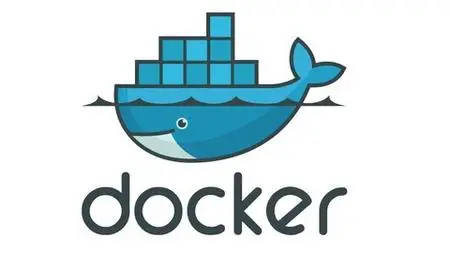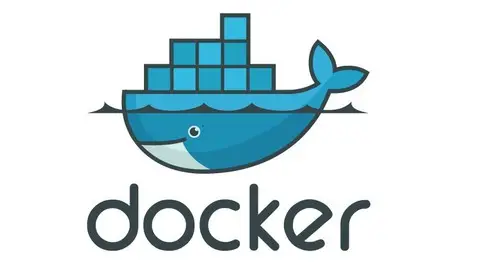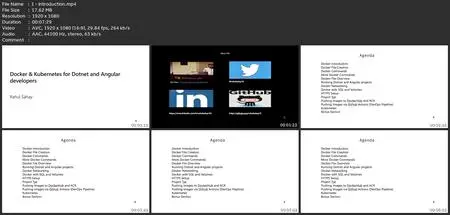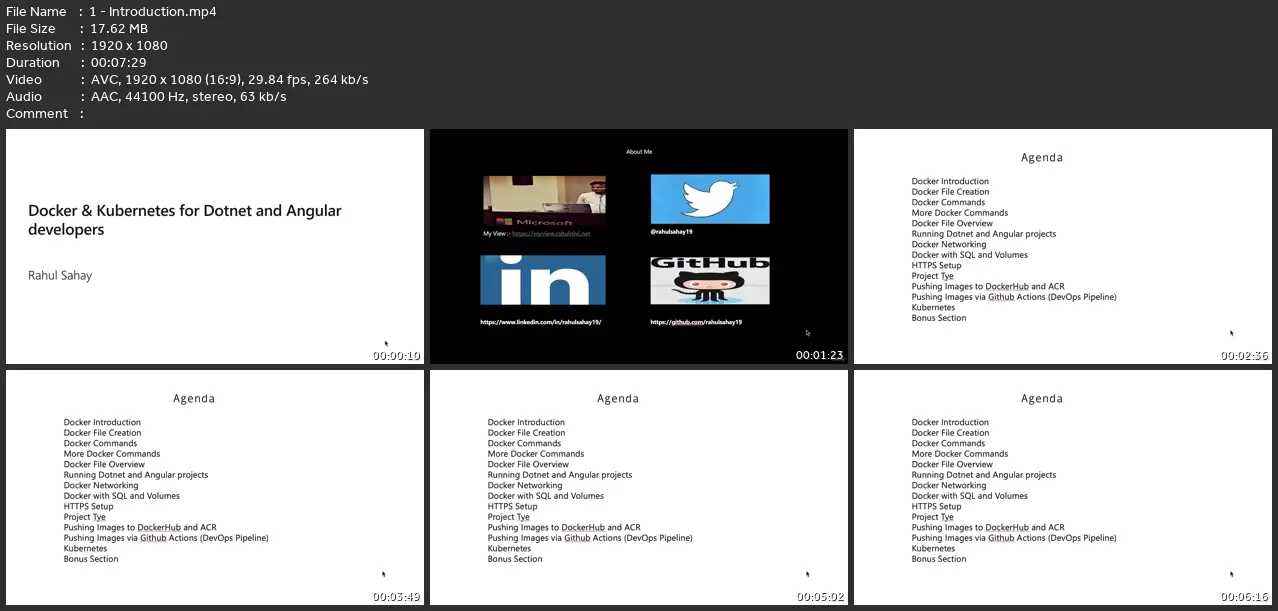Docker & Kubernetes For .Net And Angular Developers
Last updated 8/2023
MP4 | Video: h264, 1920x1080 | Audio: AAC, 44.1 KHz
Language: English (US) | Size: 2.73 GB | Duration: 7h 1m
Last updated 8/2023
MP4 | Video: h264, 1920x1080 | Audio: AAC, 44.1 KHz
Language: English (US) | Size: 2.73 GB | Duration: 7h 1m
For Dotnet and Angular Developers
What you'll learn
Build, test, debug and deploy .net and angular apps on docker while learning production-style development workflows
Create docker files for dotnet apps
create docker files for angular apps
create docker files for simple and complex html files
Containerize SQL server
Multi stage builds
Creating Docker Compose files
Volume creation
Network creation
HTTPS handling inside container
Project Tye - Microsoft tooling for containers and kubernetes
CI/CD setup with Github actions
Deploying containers on Azure container instances
Deploying containers on Azure web apps
Deploying containers on Azure container registry
Deploying containers on Dockerhub
Kubernetes Setup
And many more things, you will learn along.
Requirements
Basic coding experience is good to start this course.
Description
Welcome to the ultimate course on Docker and Kubernetes for .NET and Angular developers! If you're looking to learn how to containerize your applications and orchestrate them using Kubernetes, then you're in the right place.In this course, you will learn the fundamentals of Docker and Kubernetes, and how to use them to build, deploy, and manage your .NET and Angular applications. You'll start by learning how to containerize your applications using Docker, and then move on to learning how to deploy them to a Kubernetes cluster.Throughout the course, you'll build a real-world application using .NET and Angular, and learn how to containerize each component of the application. You'll also learn how to deploy the application to a Kubernetes cluster, and how to use Kubernetes to manage the application's scaling and availability.By the end of the course, you'll have a solid understanding of Docker and Kubernetes, and how to use them to build and deploy your applications with ease. You'll also be able to apply what you've learned to your own projects, and take your development skills to the next level.So, whether you're a .NET or Angular developer looking to enhance your skills, or you're simply interested in learning about Docker and Kubernetes, this course is for you. Enroll now and start building and deploying your applications with confidence!Who should enrol:Freshers: If you're just starting out in your career as a .NET or Angular developer, this course is a great way to learn about Docker and Kubernetes and how they can be used to build and deploy applications. You'll gain a foundational understanding of these technologies that will be useful as you move forward in your career.Junior Developers: If you have some experience with .NET or Angular development but are new to Docker and Kubernetes, this course will help you take your skills to the next level. You'll learn how to containerize your applications and deploy them using Kubernetes, which will enable you to build more scalable and resilient applications.Mid-level Developers: If you're a mid-level developer with some experience using Docker and Kubernetes, this course will help you deepen your understanding of these technologies. You'll learn how to apply Docker and Kubernetes to real-world projects, and gain valuable insights into best practices for building and deploying applications.Senior Developers: If you're a senior developer with years of experience, this course will help you stay up-to-date with the latest trends and technologies in the industry. You'll learn how to use Docker and Kubernetes to build highly scalable and resilient applications, which will be valuable in any organization.DevOps Engineers: If you're a DevOps engineer, this course will help you gain a deeper understanding of Docker and Kubernetes and how they can be used to build and deploy applications. You'll learn how to automate the deployment process and ensure high availability for your applications.Technical Leads: If you're a technical lead responsible for overseeing development projects, this course will help you understand how Docker and Kubernetes can be used to improve the efficiency and scalability of your applications. You'll gain valuable insights into how to design and architect applications for maximum performance and availability.Course Structure as follows:IntroductionIntroduction About MeBranching StrategyGetting started with DockerContainer OverviewWhat are containers?Containers Vs Virtual MachinesContainers inside virtual machinesDevelopers Vs Ops TeamDocker Image vs ContainersInstallation StepsDocker OptionsHands on with DockerLearn to create Docker FilesCreating first docker filedocker builddocker rundocker run complex HTML siteDocker Commandsdocker builddocker rundocker psdocker startdocker stopdocker rmdocker rmiremoving all images and containers via scriptMore Docker Commandsdocker pulldocker pushdocker inspectdocker statsdocker logsDocker File OverviewDocker File InstructionsDocker File overview for DotNet AppDocker File overview for Angular AppRunning Dotnet and Angular projects with dockerConsole app STDIN exampleConsole app runCMD vs EntrypointRunning ASP.NET Core in containerVerifying files in containerDebugging Docker ContainerRunning Angular app in containerVerifying files in angular containerCreating Docker Compose fileRunning Docker ComposeDocker NetworkingIntroductionBridgeNoneHostListing all networksInspecting containersInspecting networksDNS ServerAssociating containers with networkCreating custom networkContainerizing SQL ServerCreating SQL Server containerConnecting Dotnet app with SQL containerAdding Docker ComposeWorking without volumeCreating VolumeVerifying data after container shutdownHTTPS SetupSample project creationDocker file creationRunning on HTTPDev Cert creationRunning the container with HTTPSProject TyeTye IntroductionTye buildTye runCreating Frontend App using Razor TemplateCreating Backend App using Web API TemplateAdding Service DiscoveryTye Run with Backend and Frontend ProjectsAdding RedisTye Run with RedisPushing Images to DockerHub and Azure Container Registry (ACR)Pushing images on DockerHubACR CreationPushing images to ACRDeploying containers to Azure Container Instances (ACI)Another way of deploying containers to ACIDeploying Angular App with ACI endpointDeploying container to web appCI/CD pipeline using Github ActionsGithub Actions introductionCreating first workfileAdding Docker login step for ACRAdding Docker build and push stepRunning the workfileSQL Server container preparationCreated SQL server container on AzurePublishing database to container instance on AzureKubernetes SetupBranching StrategyEnabling KubernetesK8s ComponentsCreating Catalog Api YamlAdding Brands and Types sectionsCreating Mongo ConfigMapCatalog Db Yaml CreationCatalog db Secret CreationDocker tag Catalog Api imageCatalog Api and Db CreatedSetting up Kubernetes DashboardFixing Container config issueKubernetes LensBonus SectionBonus LectureAs technology continues to evolve, we are committed to updating the content to ensure it remains relevant and useful. We're confident that you will find the course engaging and informative, and we value your feedback. Please let us know if you have any suggestions or comments, as your input is critical in helping us create top-quality, enterprise-ready content that meets your needs. Thank you for choosing this course, and we look forward to helping you enhance your skills and reach your goals.
Who this course is for:
Beginner and intermediate developers who want to enhance their knowledge of docker using .Net and Angular apps,Beginner and intermediate developers who wish to learn how to apply containers to their projects locally and also to deploy on cloud. This couse is meant for them.





